Lexus Enthusiast editor Kevin Watts traveled to San Francisco, California, last week to test drive the all-new 2018 Lexus LS 500 & LS 500h hybrid. This is his personal impressions of the car, a full technical overview was posted last week.
I want to start off with a story. If you’ve been following Lexus Enthusiast for any time, it’s a story you’ve probably heard before, but it plays a big part into how I feel about the new fifth-generation LS flagship.
Rewind the clock back to 1998. I’m living in Toronto, Ontario, and I start seeing this blacked-out sedan cruising around my neighborhood. I’ve always been into luxury cars, but life has many paths and it’s been a while since something grabbed my attention.
I finally figure out the brand and badge, and it’s a new one to me: The Lexus LS 400. Up until this point, the only Lexus I know is the LX, which was a key vehicle for anyone listening to The Notorious BIG in those days.
Anyways, that LS 400 represents a turning point in my life. When I finally saved enough money to buy my first car eight years later, I did something completely insane and bought a 1994 LS 400. Shortly after, I started this website, where I have been writing about Lexus vehicles nearly every day for a full decade.
This is all to say that I am not impartial about the new Lexus LS. There are things that I like and things that I don’t, but this is my all-time favorite car. Consider this a disclaimer for what follows.
With ten years since the introduction of the last LS sedan, it feels unfair to compare old to new. Put side-by-side, the fifth-generation is sharper in every way — the design, the driving experience, even the point and purpose. Gone is the balanced approach of the LS 460, of trying to be all things to all people. The new LS is a car unafraid to make its opinions loud and clear.
Straight away, its presence is undeniable. The LS 500 is massive and sculpted, with the heft and detail of a fine watch. A intricate interpretation of the spindle grille makes up most of the car face, filled with a mesh designed by a single person over the course of six months:

The outward points of spindle grille carry through the curves of the body, dipping down to create a similar pattern in the rear — this is my favorite design detail, and is best illustrated with this short video:
Another exterior highlight is the katana blade trim that starts at the front wheels and continues through to the rear bumper:
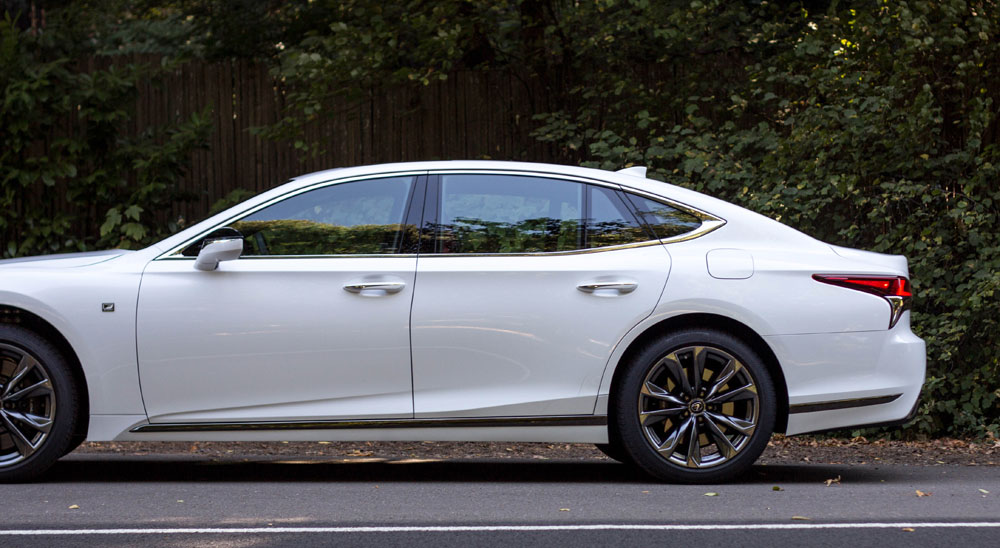
If I have one complaint, it’s the tail lights and the way they slope toward the license plate — it gives the rear a pinched look that makes the trunk bulge:
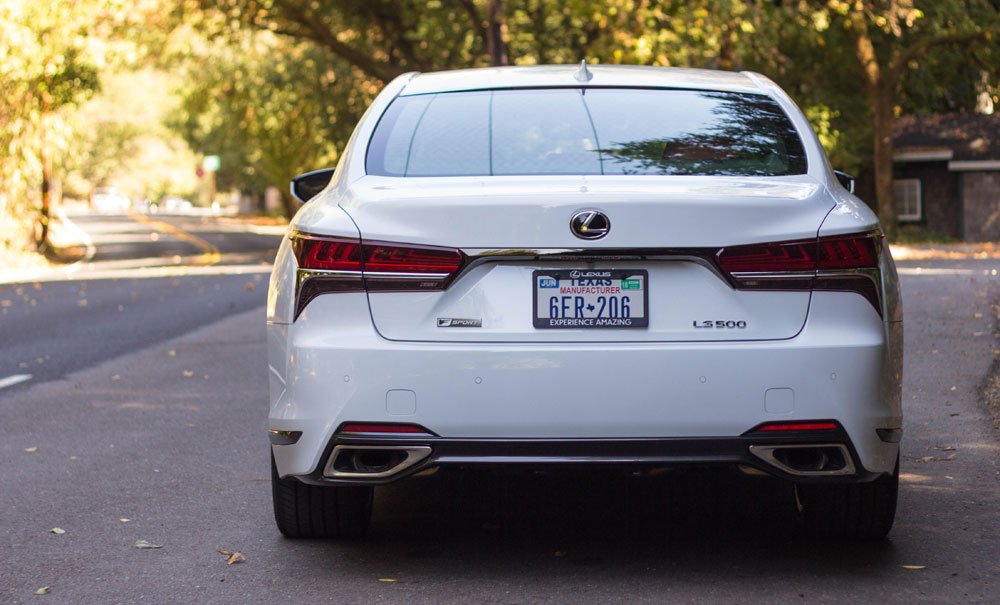
When it comes to performance, let’s get one thing out of the way right quick — I have a hard time understanding people’s obsession with V8 engines, or the lack thereof. The new twin-turbo 416-horsepower V6 in the LS 500 is an absolute monster, and represents a quantum leap over any existing Lexus engine.
On paper, it matches up against the competition’s V8 offerings in straight line performance. Behind the wheel, the only way you could decipher the number of cylinders would be looking in the owner’s manual. There’s no discernible turbo lag and torque is near instantaneous, bringing with it an endless wave of power. With this much available acceleration, the horsepower number almost seems irrelevant.
In my opinion, this is a great engine. Case closed.
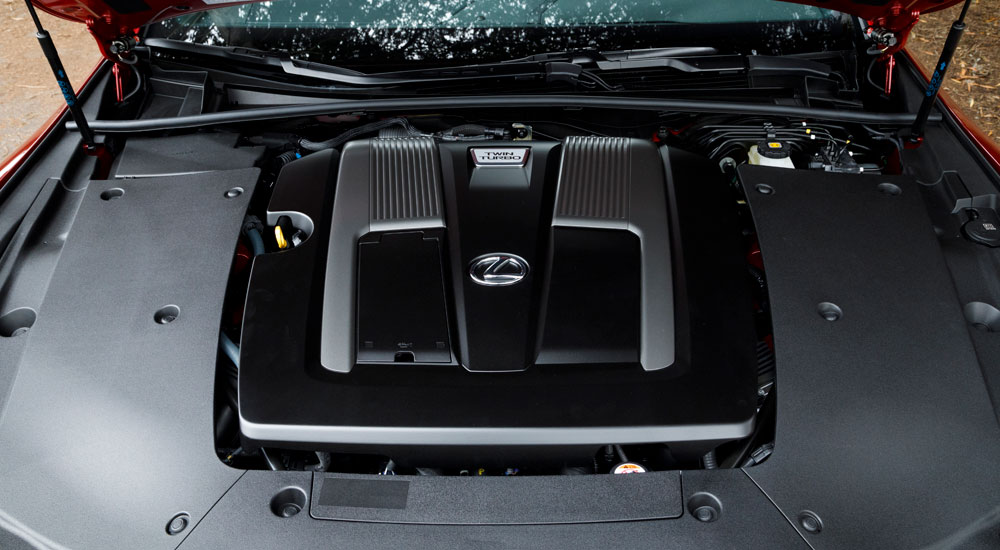
On the flip side, the driving experience can vary significantly. The combinations are endless, with all-wheel drive and rear-wheel drive and air suspensions and rear-steering — there wasn’t enough time in the day to try the LS in all its many iterations.
What I can say is this:
- The LS 500 AWD is a rocket, firmly planted. It was the first car I drove, with the most variety in experience. Composed and isolating in rush hour traffic, strong and confident on the highway and in the curves. Exactly what you want in a full-size luxury sedan.
- The LS 500 F SPORT, I don’t know, it was just crazy. Rear-wheel drive feels like such a luxury with my Canadian AWD sensibilities, and the effort of being a responsible adult weighed heavy in my time behind the wheel. In SPORT+ mode, the car compressed around me, and I had to fight to keep my speed down while powering through corners. A caged animal, just waiting to get into trouble.
- After driving with the new twin-turbo V6 all day, the last vehicle of the day was an LS 500h equipped with the Executive package. The powertrain that works so well in the LC 500h didn’t have the same punch in the LS, and the multi-speed transmission felt a little jumpy. I believe it will take someone deeply invested in buying a hybrid to choose this over an LS 500.
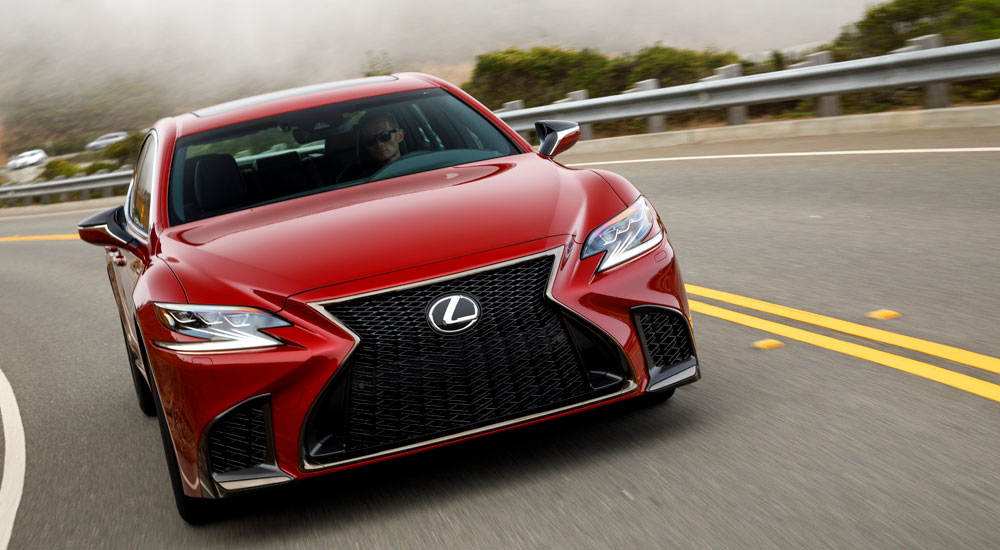
Much has been made of the new safety systems, and for good reason. You are likely familiar with Lane Keep Assist and dynamic cruise control — these features are now standard across the Lexus lineup, and they’re very effective at reducing the mental burden of drivers.
The Lexus Safety System +A in the new LS is at a completely different level, like a protective bubble that surrounds the car. It never shows itself unless necessary, and in downtown San Francisco, those sensors and radars are very necessary. I avoided curbs, dodged cyclists, had the full experience of augmented braking while making a left turn. The LS felt like a partner, though just like any relationship, there’s a learning curve.
(In particular, I was a fan of the Lane Trace Assist, which locks you into your lane and keeps you there. This technology is a big leap forward.)
During his presentation, LS Chief Designer Koichi Suga showed a photo of this giant armchair, citing it as the inspiration for the seating:
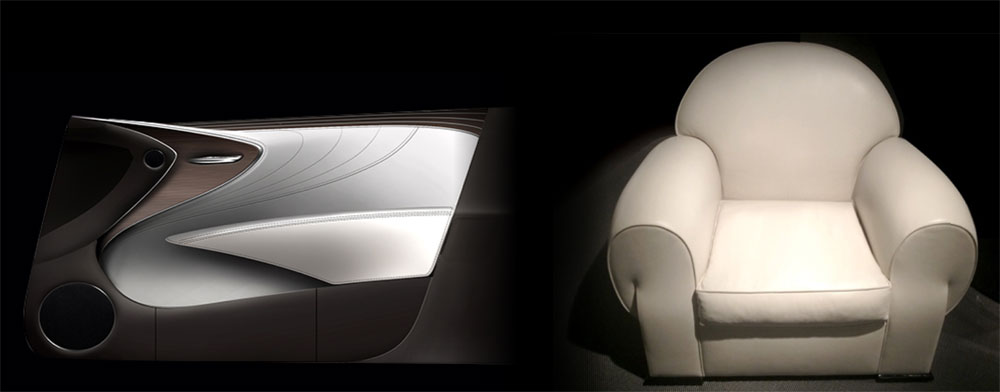
This was a central concept for the cabin, with arm rests that circle every seat comfortably:

Let me just say, it works. The seats in the LS are wild — 28-way power adjustable, massage options in the front and back. Honestly, the pneumatic pressure massage in the driver’s seat touched me in ways I would never allow a human to replicate.
Material design is another strong point, with every surface luxurious and soft to the touch. The Kiriko glass and pleated fabric interior is textbook Lexus with its handmade story and attention to detail, but every interior combination had just the right amount of texture.
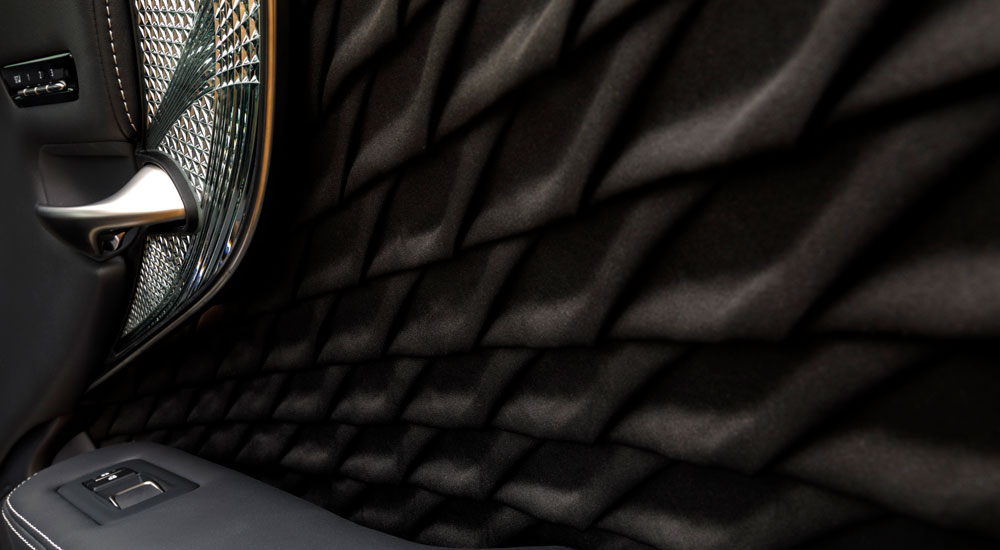
Where the LS cabin falls short is the Remote Touch controller and the Lexus infotainment system. This is the one area where Lexus should have embraced significant change, perhaps by adopting Apple Carplay or Android Auto. Instead, there is now an obvious black mark on an otherwise stellar interior. It’s not bad, but it’s not great. Honestly, the rest of the car deserves better.

When I heard the starting price of around $75,000 USD for the new LS, I was shocked. Like mouth gaping open, stunned with disbelief. For some context, this undercuts the outgoing long-wheelbase LS 460L by nearly $4,000 despite having more standard equipment and features. The equivalent BMW 7-Series and Mercedes S-Class can cost upwards to $25,000 more in the USA.
But the luxury market can get weird at times, and I’ve seen people arguing that this “value” pricing means Lexus has abandoned the top-tier flagship market.
I see it a different way — when the original LS 400 was introduced in 1989, it was positioned as a S-Class competitor but was priced like an E-Class. This was wildly successful, and the LS 400 kickstarted a transformation of what consumers expect from a luxury car.
Will this strategy work in 2018? It’s a tough call, but I don’t see how you could fault Lexus for trying something different.
My biggest takeaway from driving the new LS 500 & LS 500h? Lexus is done trying to match up inch-by-inch with its competitors.
Think of all the ways Lexus has gone against the grain with their new flagship — a V6 instead of a V8, a price well below expectations, a design that you either love or hate, assisted-driving instead of self-driving technology.
Having strong opinions is never safe, but Lexus has embraced their outsider status and are unafraid to stand apart from the crowd. The new 2018 LS is a singular experience, and I don’t believe Lexus would have it any other way.

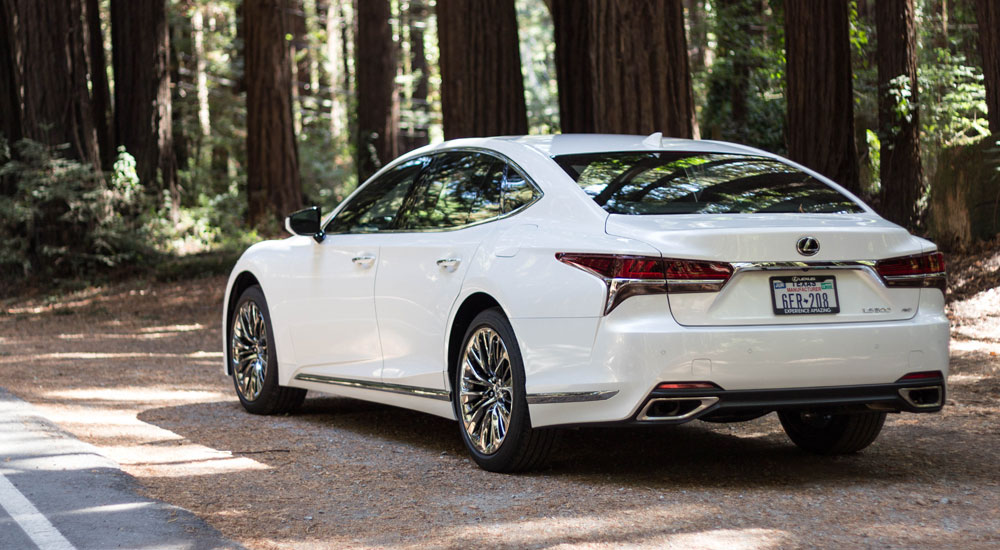
Comments